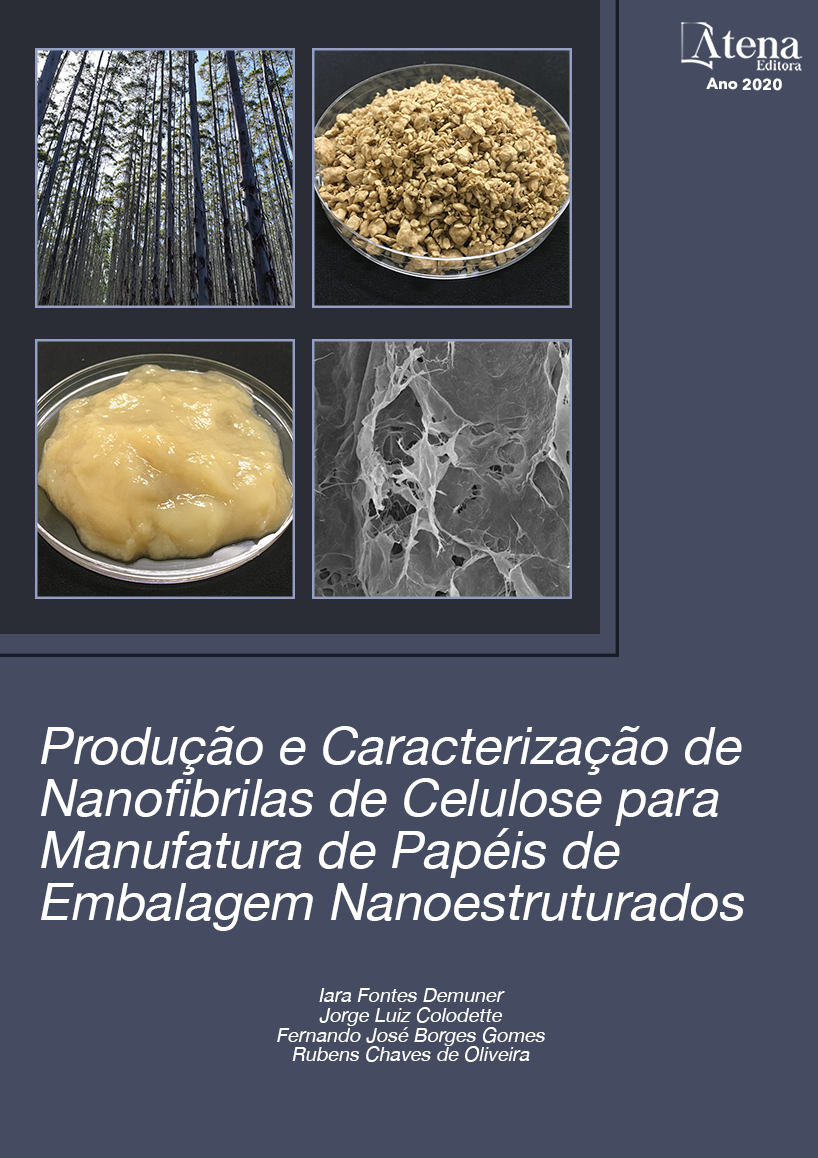
PRODUÇÃO E CARACTERIZAÇÃO DE NANOFIBRILAS DE CELULOSE PARA MANUFATURA DE PAPÉIS DE EMBALAGEM NANOESTRUTURADOS
A crescente busca pela sustentabilidade visa garantir a preservação ambiental e proporcionar melhor qualidade dos materiais desenvolvidos. As nanoceluloses oriundas de materiais lignocelulósicos têm se destacado por apresentarem propriedades diferenciadas, como alta resistência e rigidez, baixo peso e elevada área superficial, podendo ser aplicado em diversas indústrias. Estudos têm sido realizados com materiais provenientes de fibras celulósicas livres de lignina, as celuloses nanofibriladas (CNF) e com fibras não branqueadas contendo lignina residual, as lignoceluloses nanofibriladas (LCNF). O objetivo desse estudo foi detalhar a ultraestrutura da CNF e LCNF produzidas a partir de madeiras e avaliar o potencial das LCNF como aditivo na produção de papéis de embalagens nanoestruturados. No Capítulo 1 é apresentado a produção de lignocelulose nanofibrilada (LCNF) e celulose nanofibrilada (CNF) oriundas de espécies madeireiras bem estabelecidas no Brasil (Eucalyptus spp. e Pinus spp.), bem como a caracterização completa da estrutura química, física e morfológica desses nanomateriais. No Capítulo 2 é avaliado o efeito da adição de lignoceluloses nanofibriladas nas propriedades de papéis kraftliner e sackraft nanoestruturadas.
PRODUÇÃO E CARACTERIZAÇÃO DE NANOFIBRILAS DE CELULOSE PARA MANUFATURA DE PAPÉIS DE EMBALAGEM NANOESTRUTURADOS
-
DOI: 10.22533/at.ed.555201908
-
Palavras-chave: Nanofibrilas, Pinus, Eucalipto; Embalagens; Resistências físico-mecânicas.
-
Keywords: Nanofibrils, eucalypt, pine, packaging, physical-mechanical resistances.
-
Abstract:
The growing quest for sustainability encourages researches and the industrial sector to invest in renewable resources, with the intention of ensure environmental preservation and provide better quality of the materials developed. Celluloses nanofibrils have gained prominence because they have difference properties, such as high strength and stiffness, low weight and high surface area and reactivity, and can be applied in several industries. Most studies with cellulose nanofibrils (CNF) use lignin-free fibers obtained from bleached pulps; however, unbleached fibers containing residual lignin may also be used for this same purpose, getting the lignocelluloses nanofibrils (LCNF). The aim of this study was to detail the ultrastructure of CNF and LCNF produced from wood and to evaluate the potential of LCNF as an additive in the production of nanostructured packaging papers. Chapter 1 presents the production of lignocellulose nanofibrils (LCNF) and cellulose nanofibrils (CNF) from well-established timber species in Brazil: Eucalyptus spp. and Pinus spp., as well as the complete characterization of the chemical, physical and morphological structure of these nanomaterials. In Chapter 2 is evaluated the effect of lignocelluloses nanofibrils addition on the properties of kraftliner and sackraft nanostructured papers.
-
Número de páginas: 74
- Jorge Luiz Colodette
- Fernando José Borges Gomes
- Rubens Chaves de Oliveira
- Iara Fontes Demuner


